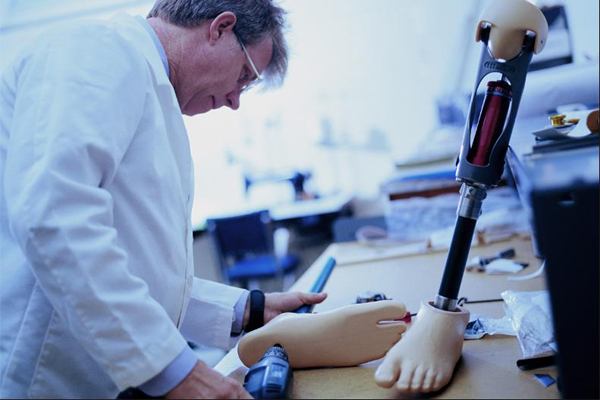



|
Tweet
Pin
It
|
The nature of work of a prosthetist and orthotist involves various stages. To start with a P&O professional works as part of a clinical team which comprises of orthopaedics, physiatrists, nurses and related medical professionals. They have to study records and reports of a patient regarding the suitable orthotic/ prosthetic aid required and then have to communicate appropriate information regarding this to the patients and their families.
They then have to take measurements and casts required for the proper fabrication and fitting of Prosthetics and orthotics. They have to formulate designs and select materials and components for making the aids. All this requires detailed studies as the orthotic and prosthetic requirements of patients vary with the nature of disability, their body type, their working and living conditions etc. In short, the prosthesis and orthosis have to be custom made.
They then have to fit these aids and also teach their patients and their families, the use of these orthotic and prosthetic aids. They have to ensure that the fitting and alignment of the aids are proper and do not cause discomfort to the patients.
A P&O professional's job does not end here. They have to take part in follow-up procedures, maintenance and replacement of the orthotic and prosthetic aids. They must supervise the activity of supporting staff, manage prosthetics and orthotics workshop, maintain safe working environment and procedures. Those involved in training and education have to supervise and conduct education and training of prosthetics and orthotics students upto undergraduate level. They have to upgrade their skills form time to time and should keep abreast of the latest technology and breakthrough in this field. They also have to contribute to community rehabilitation programmes and improve social awareness as regards the use of prothesis and orthosis and safe medical practices.
As regards the place of work of a P&O professional, they work in hospitals, clinics, laboratories, work room and fitting rooms, device manufacturing companies, rehabilitation departments of hospitals and government agencies, ambulatory care services and special treatment facilities like arthritis centres. Teaching and research and development are other options available to them.
This profession is a time demanding one but brings with it good employment opportunities and self practice facilities. Based on their educational qualifications and professional experience P&O professionals may get posted as Technologists, Consultants, Prosthetists and Orthotists in the supervisory level, as Technicians or Assistants. With upgrading of skills and considerable amount of job experience they may become Head of the Department. Those in the teaching field can become Instructors and Lecturers. Yet others can join R&D cells of government organizations and MNCs as Researchers. Trained professionals can also start their own manufacturing and maintenance units.
Find it Useful ? Help Others by Sharing Online
Comments and Discussions |
Related
Career Options
|
|||
|
|